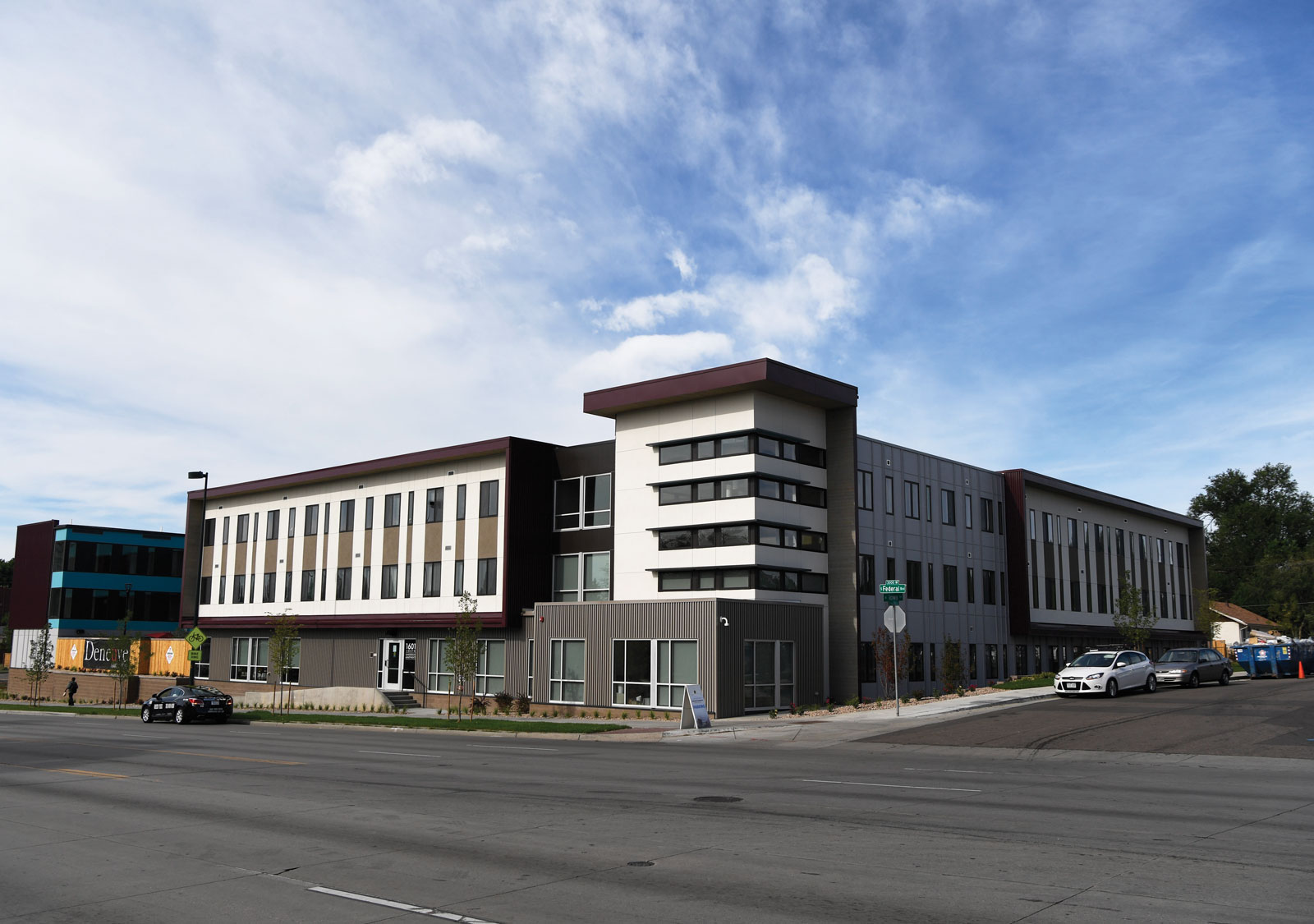The Local newsletter is your free, daily guide to life in Colorado. For locals, by locals.
You might mistake the five-month-old Sanderson Apartments in southwest neighborhood Mar Lee for any of the new residential complexes around town. But every aspect of the building—the Mental Health Center of Denver’s newest permanent supportive housing—makes the residents, who are chronically homeless people with histories of behavioral health issues and trauma, feel safe. The approach is called trauma-informed design; the three following strategies show how it works.
- All of the residents once lived on the streets, so light and openness are familiar; the 60-unit property has a large central skylight and rows of windows along the hallways to filter in the sun. “If you come from outside, you want the light,” says JoAnn Toney, director of housing and residential services.
- Passageways widen as you walk toward the center of the building, so people don’t feel closed in. That layout also creates lines of sight down each artery, so tenants and staff (who are on-site 24/7) can see who’s coming and going.
- Aside from the entrance, only the bathroom in each 440-square-foot, fully furnished unit has a door. Residents can quickly determine that their surroundings are secure.








